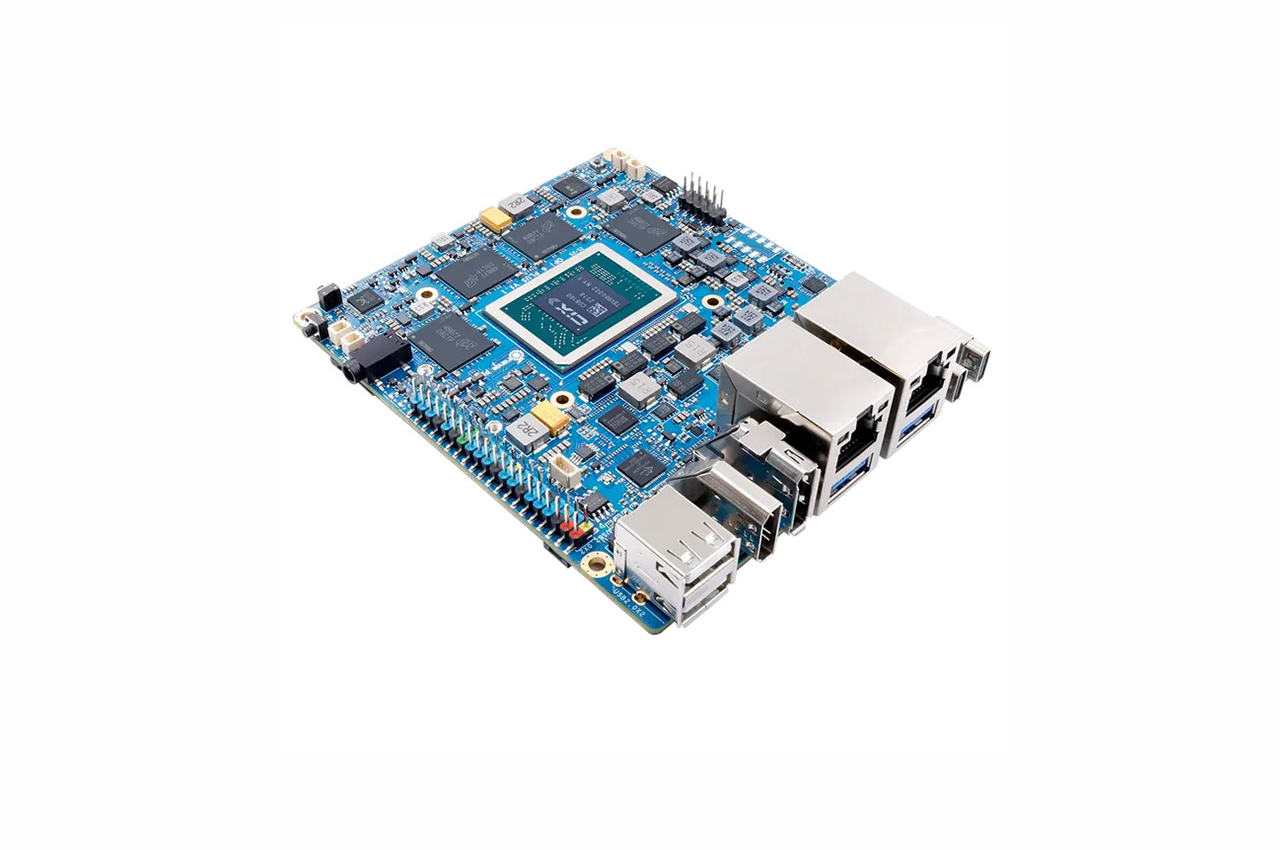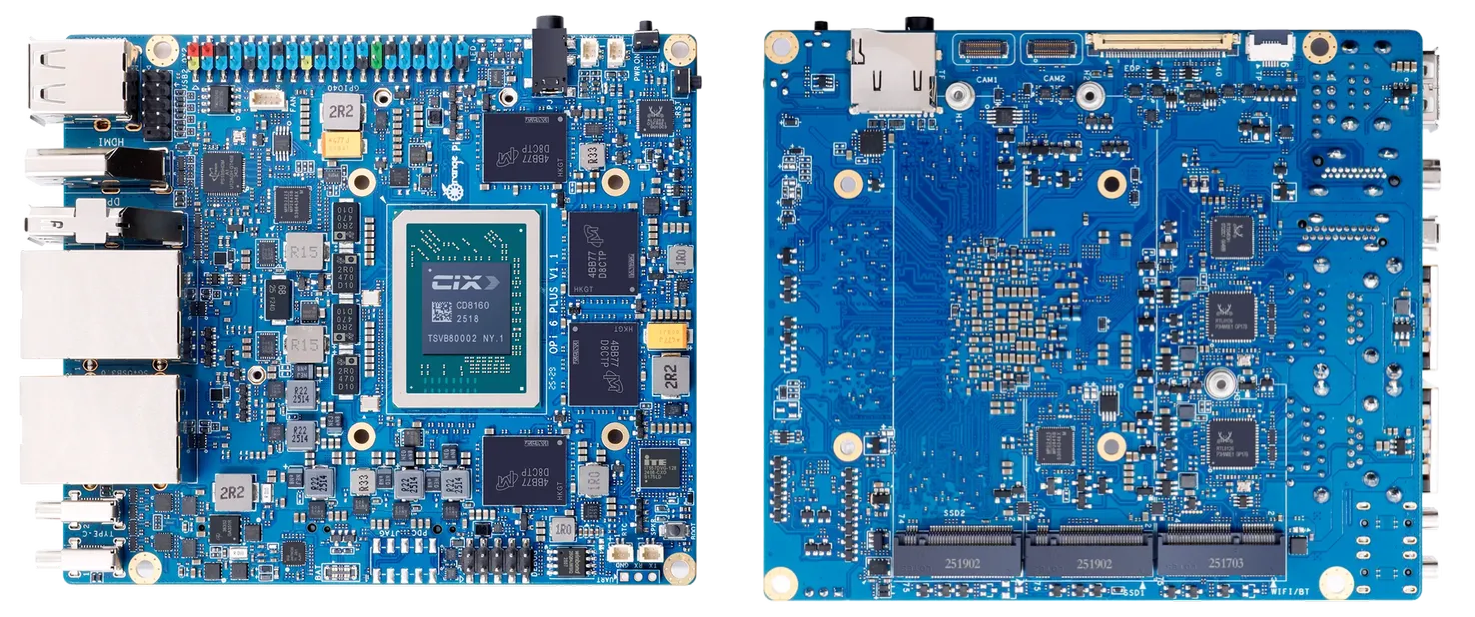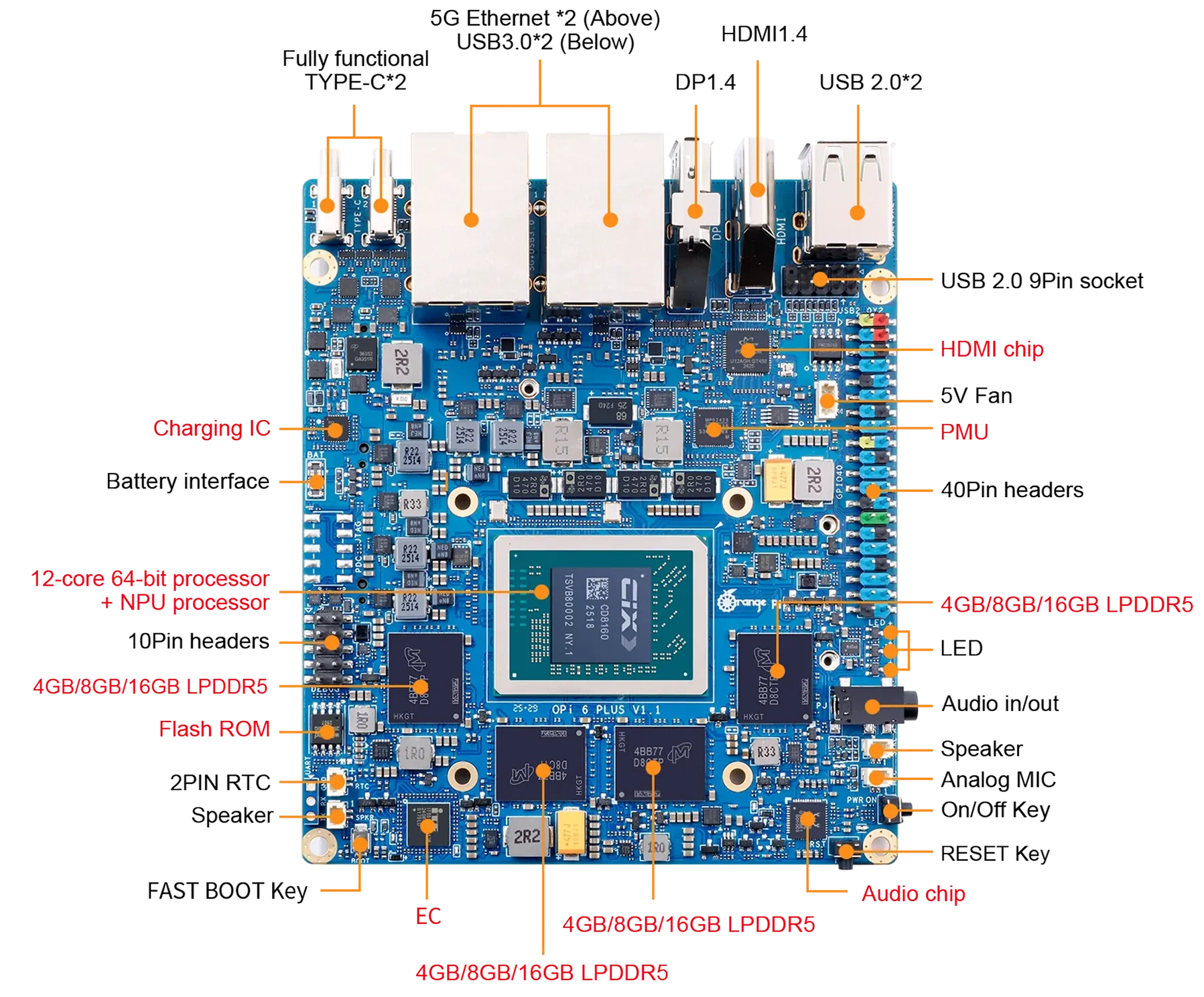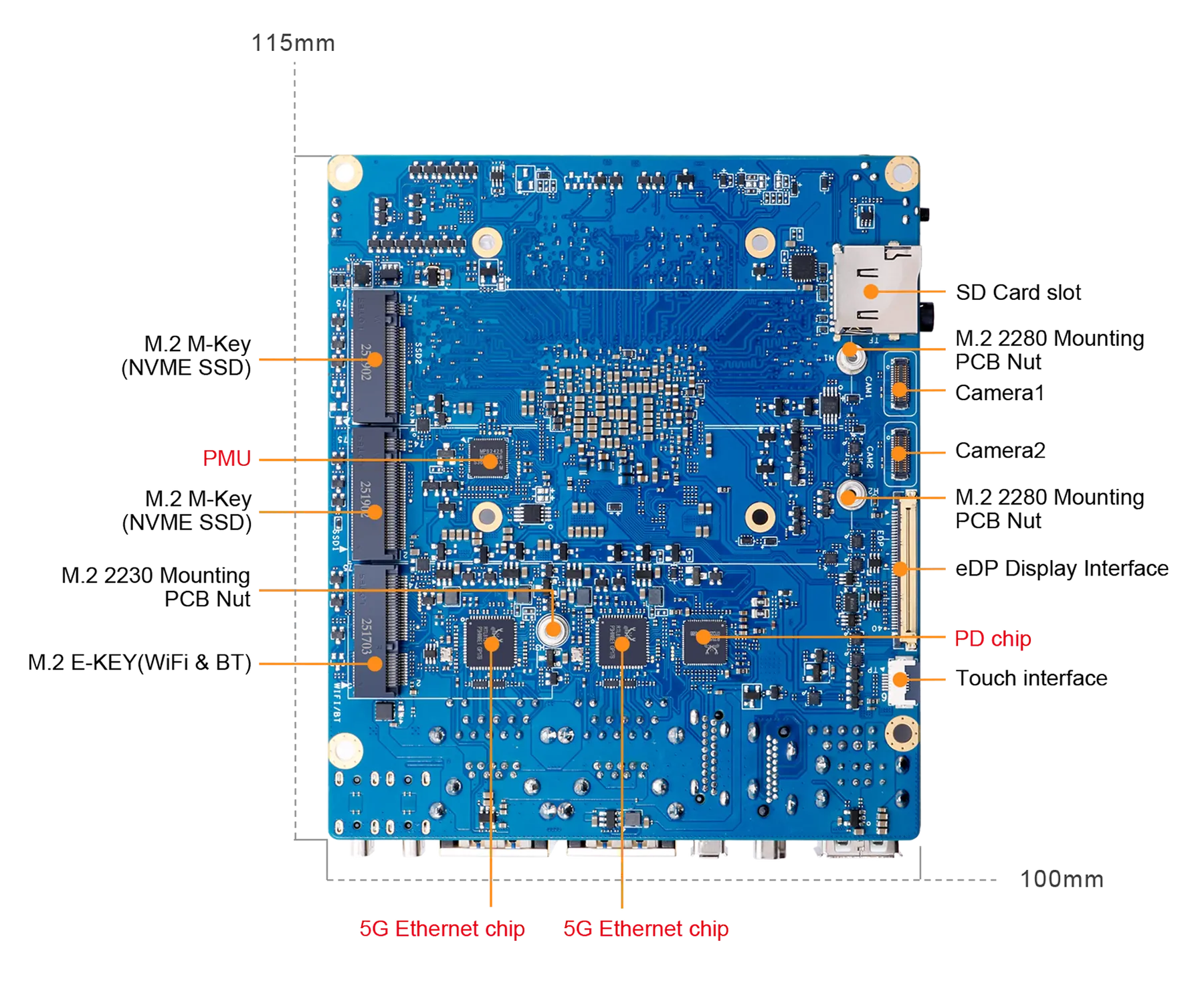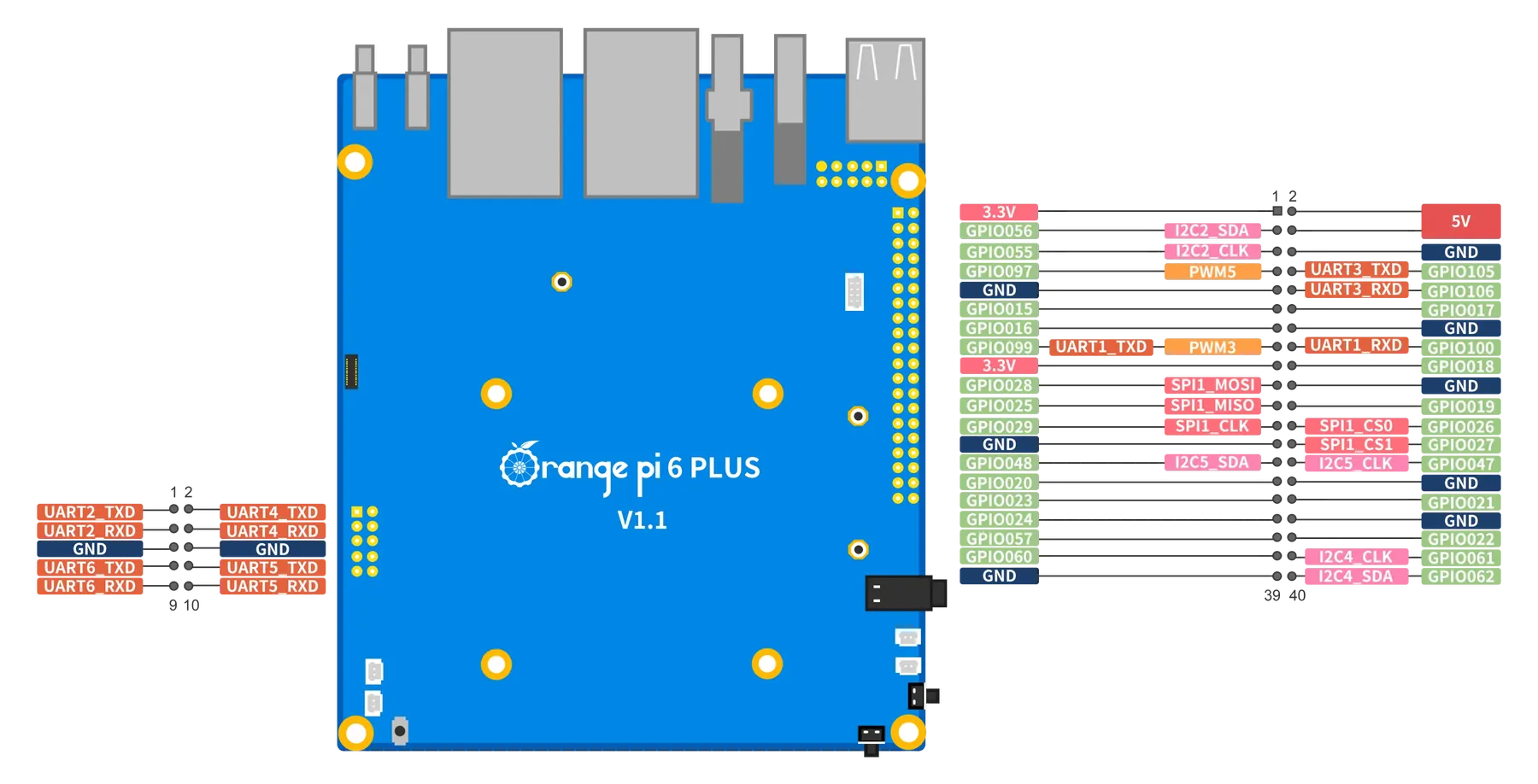The Orange Pi SBC lineup provides open-source platforms designed for embedded computing, edge AI, and high-performance prototyping. These boards integrate powerful processors, flexible I/O interfaces, and developer-friendly software to support a wide range of applications — from robotics and industrial automation to AI model deployment and multimedia systems.
The most recent Orange Pi 6 Plus builds on the same idea and has a 12-core heterogeneous processor, two 5 Gb Ethernet ports, and can support high-speed LPDDR5 memory. It markets to developers that require a small, but powerful SBC to be used in parallel computing, AI acceleration, and high-bandwidth connectivity. The architecture design of the board integrates effective CPU clusters with inbuilt NPU, sophisticated display interface, and M.2 port expansion to allow storage and wireless communication modules.
This SBC also features a 40-pin expansion header for peripheral integration and prototyping. We previously covered similar SBCs, including the Atum A3 Nano Board, Forlinx OK3506-S12 Mini SBC, Terasic DE25-Nano, and LattePanda IOTA Intel N150 SBC — feel free to check them out if you’re interested in boards of this category.
Orange Pi 6 Plus SBC top and bottom side (click to zoom)
Orange Pi 6 Plus SBC Specifications:
Orange Pi 6 Plus is based on the CIX CD8180/P1 SoC, a 12-core design, with four Cortex-A720 big cores with a maximum frequency of 2.8 GHz, four Cortex-A720 medium cores with a maximum frequency of 2.4 GHz and four Cortex-A520 efficiency cores with a maximum frequency of 1.8 GHz. It has an Arm Immortalis G720 MC10 graphics core and hardware ray tracing, Vulkan 1.3, OpenGL ES 3.2, and OpenCL 3.0. It has up to 30 TOPS of mixed-precision computing with the onboard AI computing engine called the Neural Processing Unit (NPU).
Orange Pi 6 Plus SBC top site specification (click to zoom)
LPDDR5 memory is sustained on 128-bit interface by the board at a maximum transfer speed of 5500 MT/s and a 4 GB to 64 GB memory capacity. Storage is available as dual M.2 Key-M (2280) NVMe slots, TF (microSD) slot and 64 Mbit SPI Flash. Connectivity options are two 5 Gb Ethernet, M.2 Key-E (Wi-Fi, Bluetooth) modules, two USB 3.0, two USB 2.0, and two full-function USB Type-C 3.0 (can also accept up to 100 W PD input).
Orange Pi 6 Plus SBC bottom site specification (click to zoom)
In the case of multimedia and camera integration, the SBC has two 4-lane MIPI CSI interfaces, display outputs HDMI 1.4 (4K at 60 Hz), DP 1.4 (4K at 120 Hz), two Type-C DP, and eDP 4K at 60 Hz. Other hardware comprises a 3.5 mm audio jack with mic input, two-speaker outputs, a 40mm PWM fan connector, power/reset/ boot buttons, a 40 pin GPIO header supporting UART, I2C, SPI, and PWM and a 20 V Type-C PD power adapter (100W). The board measures 115 x 100 mm and weighs 132 gm.
Orange Pi 6 Plus Ports (click to zoom)
The Orange Pi 6 Plus has a broad software performer platform, featuring Debian, Ubuntu, Android and ROS 2, enabling developers to develop applications on desktop computing, embedded computing, and robotics. Its 12-core SoC is actively tested by the community on its kernel compatibility and the open-source drivers of Orange Pi provide stable hardware acceleration of both the NPU and the GPU, as well as optimized performance on supported platforms.
Orange Pi 6 Plus Pinout (click to zoom)
Orange Pi is yet to confirm the ultimate retail cost of the Orange Pi 6 Plus, however, preliminary news shows that the product will be distributed on such sites as AliExpress and Amazon. The board will have several memory configurations which include 16 GB, 32 GB and 64GB, and the prices will differ depending on the model chosen.
